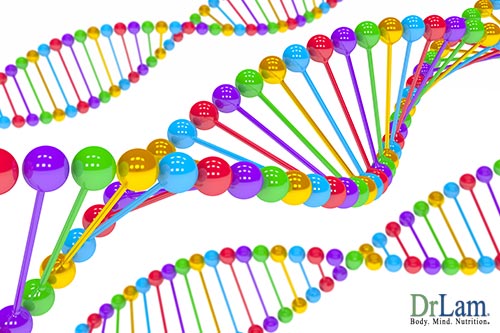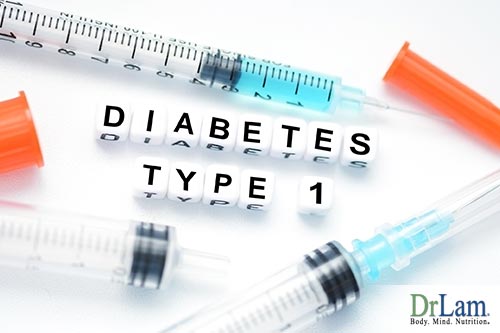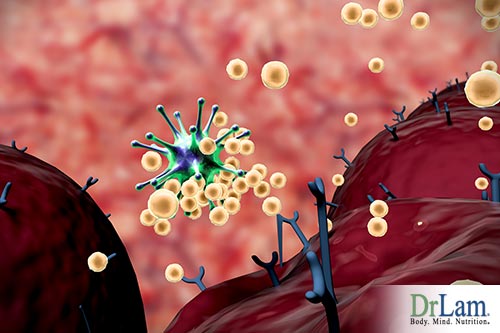 Autoimmune disease is one of the fastest-growing causes of disability and death in the U.S. Some researchers and clinicians believe the incidence of these chronic conditions is skyrocketing in nearly all industrialized countries of the world.
Autoimmune disease is one of the fastest-growing causes of disability and death in the U.S. Some researchers and clinicians believe the incidence of these chronic conditions is skyrocketing in nearly all industrialized countries of the world.
Presumed causes vary, but all seem to be centered on the microbiome. The mucosal barrier between the gut and the rest of the body appears to be exceptionally important in the development of autoimmune disease. Dysbiosis of the microbiome and a leaky gut set the stage for these life-long conditions.
In the United States, approximately 8.5 million people suffer from some form of one of over 100 autoimmune diseases. About three-fourths of these sufferers are women. These conditions are the fourth largest source of disability in U.S. women.
Many of these conditions are on the rise. For example, between 2001 and 2009 the
Diabetes Association reported an increase of 23% in the incidence of Type 1 diabetes. The incidence of celiac disease is reported to be 1 in 133 people.
Reasons for these increases aren’t fully known. While most sufferers have a genetic predisposition to develop any given autoimmune disease, genes do not change fast enough to explain such increases. Most researchers believe there must be environmental factors at work.
To emphasize the importance of continuing research into finding the causes for autoimmune conditions, consider this: 1 in 69 women under the age of 50 will eventually have breast cancer, but almost 1 in 9 women of childbearing age will eventually have an autoimmune disease.
The human microbiome contains more microorganisms than there are cells in the body, around 1014 bacteria. Every person has a unique microbiome starting from birth and affected by the environment, foods consumed, and other factors. At least some of this variability has to do with the presence of stress, along with other environmental factors.
Inside the microbiome, the food you consume is processed to release nutrients needed for good health and functioning. The gut, beginning with the mouth, is the primary way both nutrients and pathogens enter the body. All of the microflora inside the gut forms a barrier between pathogens and the rest of the body. When the gut is in good condition and functioning appropriately, the body also functions well.
While another of the major organs of our bodies, the skin, is protected by multiple layers of epithelial cells, the gut is protected by only one layer of these cells. As long as the junctions between the cells in this layer are tight, they serve their purpose very well.
However, there can come a time when the microbiome doesn’t function as well as it should. Toxic agents in one form or another can gain entry into the gut system and cause significant problems.
One significant problem occurs when the junctions between these epithelial cells that protect the gut loosen. When this happens, food particles, bacteria, viruses, and other pathogens can slip through the loosened junctions and enter the bloodstream. This condition is called “leaky gut” syndrome.
The epithelial cells in the lining of the gut are covered with a mucosal covering that makes up the majority of the immune system in the body. Mucosa associated lymphoid tissue (MALT) is a highly developed and very specialized tissue that holds immunologically active cells, enabling this lining to do its job of dealing with pathogens.
This mucosal immune system has the job of distinguishing between harmful and non-harmful substances. Problems arise when, due to a leaky gut, particles cross the mucosal barrier and are deemed foreign, and therefore dangerous, by this immune system.
When the mucosal immune system labels substances as dangerous, it mobilizes the immune response and inflammation results as the immune system strives to fight the foreign substance. Over time, this immune response and the inflammation it produces can lead to autoimmune disease.
One theory that has been proposed to explain the significant increase in autoimmune disease is the “hygiene” hypothesis. This hypothesis says the increasing level of personal hygiene in developed countries has paved the way for the immune system to have a much more difficult time distinguishing between dangerous and non-dangerous organisms.
Not being exposed to pathogens early in life and giving our immune systems the opportunity to develop antibodies is the proposed mechanism behind this hypothesis. This idea is supported by research showing the interaction between microorganisms in the gut and the innate immune system to be a critical factor in the development of some chronic conditions like Type 1 diabetes and rheumatoid arthritis.
 Western countries, in particular, are influenced by this change, having attempted to do away with the burden of infectious diseases by over-emphasizing cleanliness. This has led to more and more opportunistic chronic diseases cropping up because of children not being exposed to the pathogens at a young age when the immune system is developing.
Western countries, in particular, are influenced by this change, having attempted to do away with the burden of infectious diseases by over-emphasizing cleanliness. This has led to more and more opportunistic chronic diseases cropping up because of children not being exposed to the pathogens at a young age when the immune system is developing.
Doing this has led to an environment where metabolic, cardiovascular, and autoimmune illness conditions can thrive. The genetic basis for these conditions has not changed, but the environmental aspect has changed dramatically.
Research has shown the microbiome of individuals suffering from chronic illnesses is different from that of normal individuals. The different types and amounts of gut bacteria are many times different in cases of some chronic conditions. Dysbiosis of the gut can be brought on by pathogens and by overuse of antibiotics. This dysbiosis is thought to be the foundation of many autoimmune diseases.
One pre-eminent pioneer in understanding celiac disease, Dr. Alessio Fasano, who is also considered an expert in autoimmune disease, put forth the idea of the need of a “three legged stool” concept when considering the development of this kind of chronic illness. He says three critical conditions must be present if someone is to develop this kind of illness.
 First, there must be a genetic predisposition. These chronic conditions often run in families, supporting the thought that individuals with specific genes are more likely to develop certain chronic conditions.
First, there must be a genetic predisposition. These chronic conditions often run in families, supporting the thought that individuals with specific genes are more likely to develop certain chronic conditions.
Second, there must be a trigger for this predisposition. Some specific antigen or protein that the immune system decides is dangerous must start the flow of over-activation that leads to the development of a chronic condition.
The third leg of this stool is leaky gut. This is the condition that allows the cascade of chemicals that induces or worsens inflammation and can lead to chronic conditions. There are many possible causes of leaky gut, including infections in the intestine, sensitivities to certain foods, and stress.
For some time, this role of stress has been apparent in how the microbiome functions. Under conditions of Adrenal Fatigue Syndrome, or AFS, the microbiome is negatively affected. AFS can result any time the body is under unrelenting stress, and it includes symptoms such as food sensitivity, chronic inflammation, and leaky gut.
The NeuroEndoMetabolic (NEM) Stress Response model is one of the most comprehensive ways of considering how these issues are connected. Contrary to traditional medicine, this natural medicine approach looks not at individual symptoms for remediation, but at interrelated organ systems. Many connected systems appear to be involved in the development of autoimmune disease.
Research has confirmed that genetics is not the only factor at work in the development of autoimmune disease. If genes were the only factor, identical twins would both develop these chronic conditions together. However, only about 50% of the time does the other twin develop an autoimmune disorder.
 With Type 1 diabetes especially, research indicates a disruption in the gut microbiome to be a major contributing factor. This disruption, or dysbiosis, added to genetic predisposition seems to be a perfect environment for illness to develop.
With Type 1 diabetes especially, research indicates a disruption in the gut microbiome to be a major contributing factor. This disruption, or dysbiosis, added to genetic predisposition seems to be a perfect environment for illness to develop.
Rheumatoid arthritis (RA), an autoimmune disease that affects about 1.5 million people in the U.S., also has a significant genetic component. Like Type 1 diabetes, twin studies show less of an effect from genes than would be expected. Research also strongly indicates a significant relationship between the microbiome and development of this chronic condition. Of greatest interest are the bacteria living in the host’s mouth.
Present in both the joint fluid of those with RA and their dental plaque are specific bacteria. Specific bacteria living in the mouth increases the severity of RA in animal models. There is also a correlation between the severity of RA symptoms and the severity of periodontal conditions in people with RA. Compared to healthy people, those with RA have more severe periodontal conditions in spite of good dental hygiene.
All in all, causation for these chronic conditions has not been pinpointed. However, gut dysbiosis appears to play a major role. Whether dysbiosis causes autoimmune disease or is caused by an overactive immune system, we do not know.
Autoimmune conditions have been known to follow infections in an opportunistic manner for years. Rheumatic fever follows streptococcal infections, and Chagas disease often follows Trypanosoma cruzi infection. But just how this process works hasn’t been well known.
Some possible models of the mechanism have been proposed.
This model suggests the pathogen that causes infection may also have self-mimicry in that there are elements close in amino acid sequence or in structure to the pathogen’s antigens that T or B cells activated to deal with the pathogen also begin attacking the host cells. This causes more damage and more activation of the host’s immune system, thus starting a vicious cycle effect.
A second model suggests the immune response to a specific pathogen causes damage to the host tissue. Antigens, with antibodies bound to the epitope sites on them, are spread by these APCs (or antigen presenting cells) to other cells, activating a generalized immune response to host cells.
The inflammation present during any infection initiates this model. It begins with a non-specific activation of autoimmune cells due to inflammation. This, then, sets in motion a domino effect whereby activation of these autoimmune cells leads to activation of other autoimmune cells. Thus, the importance of addressing inflammation from any source, even the body’s response to stress or AFS, is underscored.
In this model, infections may lead to the presence of cryptic antigens that are normally not visible to the immune system. The inflammatory environment is once again involved in the production of these cryptic antigens. This environment leads to increased protease production and the processing of self-epitopes by APCs.
The inflammatory environment of infections also can be involved in cytokine production. If these cytokines are of the proinflammatory types, such as IFN-y and IL-1, the spread of illnesses is much more likely.
 Recent research involving antibody-creating B cells has shown some interesting results. Normally, the production of B cells is a steady and regulated process. In this process, the B cells are produced with the ability to differentiate between the pathogen and host normal cells. This prevents them from attacking the host cells.
Recent research involving antibody-creating B cells has shown some interesting results. Normally, the production of B cells is a steady and regulated process. In this process, the B cells are produced with the ability to differentiate between the pathogen and host normal cells. This prevents them from attacking the host cells.
In the infectious environment, B cells proliferate and mutate rapidly, seeking the best variant to stick most strongly to invading cells. Once this variant is found, B cells multiply rapidly and flood the system to deal with the invading cells.
During this more chaotic part of B cell development, germinal centers (specialized parts of the lymph system) develop these high-affinity antibodies very rapidly. This allows the body to quickly build up a reservoir of B cells to fight current invaders and to be stored for future use, as well.
The unfortunate aspect of this rapid proliferation is that there are times when the antibodies that attack the invading cells also have an affinity for the host’s own cells. This leads them to attack healthy cells and can initiate autoimmune disorders.
It stands to reason that the gut microbiome, as the primary site for absorption of vitamins, nutrients, and water in the body, would be subject to food allergies. These allergies could negatively affect the microbiome’s functioning and lead to negative outcomes.
In fact, current research shows an intricate connection between the microbiome and the foods you consume. This relationship is such that the functioning of the microbiome and the thousands of microbes contained within it have an effect on the foods consumed, while the foods consumed serve to shape the composition and functioning of the microbiome. Research has shown, for example, that a diet high in fat alters the structure of the microbiome even without obesity being a factor.
Thus, the gut microbiome is changed through exposure to the environment in the form of foods you consume. This strongly suggests if you are allergic to foods consumed, this will also modify your gut microbiome in a negative way.
Much has been said about the “standard American diet”, or SAD, and the lack of nutrition resulting from it, along with the propensity for developing all kinds of chronic conditions. A majority of people in the United States have fallen under the spell of the SAD. This diet consists of fast foods, processed foods, high-fat, high-protein, high-salt, and high-sugar foods that typically lead to obesity, which is currently approaching epidemic levels.
But it is not just this diet that can lead to chronic illness. The entire “Western lifestyle” is a major factor.
The daily exposure to unrelenting stress coming from demands for ever-increasing productivity, facing terrible traffic conditions, the consumption of cigarettes and alcohol: all are risk factors for developing chronic conditions. The obesity epidemic stimulated by decreased physical activity and increased consumption of the wrong kinds of foods is a major contributing factor in several of these conditions.
Although the research into food allergies and the development of autoimmune diseases has not shown nutrition to be an etiological factor in this development, it is probable that this finding will come sooner rather than later. The apparent links between nutrition, the human gut microbiota, and autoimmune conditions are extremely interesting.
Understanding these factors along with metabolism, gut immunology, and systemic immune responses will be a key to developing a working model of the interaction of the microbiome and the development of chronic conditions.
Important research has already shown how the gut microbiome can modulate the immune response outside of the intestinal system itself. Especially targeted is the balance of Treg and TH17.
With the dramatic increase in autoimmune conditions and a lack of effective remediation techniques, finding a way to test for not only genetic predispositions but also for the food related triggers is an important step.
 These chronic conditions often begin years before symptoms are evident. By the time the symptoms appear, significant damage has already been done. Predictive antibody testing would allow for early detection of autoimmune antibodies that aren’t found by conventional health tests.
These chronic conditions often begin years before symptoms are evident. By the time the symptoms appear, significant damage has already been done. Predictive antibody testing would allow for early detection of autoimmune antibodies that aren’t found by conventional health tests.
This kind of testing will enable healthcare professionals to look for the possibility of chronic conditions before symptoms are evident and before significant damage has been done. New tests will detect the presence of autoantibodies well in advance of symptoms. The tests will also serve as predictors of flare-ups of current chronic illness conditions.
There is ample evidence that people who have one autoimmune condition tend to develop another one. Having the kinds of tests that are being developed will enable detection of the autoantibodies of a second chronic condition early on.
Early testing could also benefit children who may have a genetic predisposition to autoimmune disorders. Finding the autoantibodies that show the beginnings of a condition will allow healthcare professionals to intervene early.
Currently, this kind of testing is in its early stages of development. The panels that are available are relatively expensive. However, the cost should come down as more and more of these panels are ordered and the continuing research shows modifications that are needed.
Life with an Autoimmune disease can be difficult, but with care and through seeking out the right remediation efforts, it can be doable.
Autoimmune disease has been strongly connected to the health of the human microbiome. An unhealthy microbiome leads to leaky gut and an immune response. This brings on inflammation which is a major factor for most autoimmune diseases.